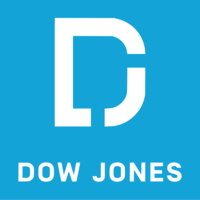The Week in Oil: U.S. Economic Growth in Focus as Geopolitical Risks Scale Back
By Giulia Petroni
Here is a look at what happened in oil markets in the week of April 22-26 and what will be in focus in the days to come.
OVERVIEW: Oil prices are on track to end the week higher after two straight weeks of losses on optimism over U.S. economic growth and persistent signs of tightness. Brent crude trades around $87 a barrel, while West Texas Intermediate is at around $83 a barrel, recouping some of the losses posted earlier this week.
MACRO: The U.S. Federal Reserve's favored inflation metric showed Friday that price pressures remain elevated. The personal consumption expenditures price index, excluding food and energy, increased 2.8% on year in March, above estimates.
Meanwhile, U.S. economic data on Thursday pointed to slower economic growth and still-firm inflation, with gross domestic product expanding at a 1.6% seasonally and inflation-adjusted annual rate in the first quarter. Despite a below-estimate GDP reading, oil market sentiment was boosted by U.S. Treasury Secretary Janet Yellen telling Reuters that economic growth is likely stronger than suggested by weaker-than-expected data on first-quarter output.
"What I focus on most is the strength of consumer spending and investment spending," Yellen said in the interview. "Those two elements of final demand came in line with last year's growth rate... so this is the underlying strength of the U.S. economy that showed continuing robust strength and an economy firing on all cylinders."
The Federal Reserve previously indicated that cuts will likely come later in the year. According to economists, the U.S. central bank will wait until at least September to start cutting, later than the European Central Bank and the Bank of England. The prospect of higher-for-longer interest rates is bearish for oil, given that demand for the commodity is typically boosted by lower borrowing costs.
GEOPOLITICAL RISKS: Crude futures shed around $2-$3 a barrel in geopolitical risk premium since last week as tensions between Israel and Iran eased along with fears of a broader regional conflict in the Middle East. Concerns were also eased by expectations that, in the case of supply disruptions, the Organization of the Petroleum Exporting Countries could bring back some of this spare capacity into market or that the U.S. could release crude from its strategic petroleum reserves.
Still, prospects of a truce in Gaza are still slim, with Israel stepping up airstrikes on Rafah and possibly invading the city soon, despite mounting pressure from Western allies. Meanwhile, The U.K. announced further sanctions targeting Iran's drone and missile industries in coordination with the U.S. and Canada following Tehran's attack on Israel earlier this month. The U.S. Senate earlier this week approved a bill that would also broaden sanctions to foreign ports, vessels and refineries processing or shipping Iranian crude in violation of existing sanctions.
DEMAND: The latest weekly report from the Energy Information Administration was positive for sentiment, as U.S. crude inventories fell 6.4 million against expectations of a fifth consecutive inventory build. The draw was led by an increase in exports as crude oil production and imports were little changed from the previous week, and refinery runs rose modestly to 88.5%.
WHAT'S AHEAD: As fears of a wider war in the Middle East scale back, investors' interest turns back to market fundamentals. According to market watchers, the focus on the supply side will be on OPEC+ production and compliance, with Reuters and Bloomberg expected to publish their surveys next week.
On the macro side, all eyes will be on the next Federal Open Market Committee meeting on Tuesday and Wednesday, when the Fed meets to set interest rates. Chair Jerome Powell, who's scheduled to give a speech after the meeting, is expected to reiterate the importance of inflation and job data in the central bank's decision, and the need to see evidence of inflation moving toward the 2% target before starting to cut.
Write to Giulia Petroni at giulia.petroni@wsj.com
(END) Dow Jones Newswires
April 26, 2024 11:58 ET (15:58 GMT)
Copyright (c) 2024 Dow Jones & Company, Inc.-
3 Stocks to Buy and 3 Stocks to Sell After Earnings
-
Markets Brief: Is It Really a Surprising Quarter for Earnings?
-
After Earnings, Is Berkshire Hathaway Stock a Buy, a Sell, or Fairly Valued?
-
For Bond Investors, Delayed Rate Cuts Demand a Different Playbook
-
What’s Happening In the Markets This Week
-
How the Tokyo Stock Exchange Is Pushing for Better Shareholder Returns
-
Magnificent 7 Stocks Earnings Updates: AI Remains the Focus
-
Where We See Opportunities After an Ugly Month for Stocks
-
Palantir Earnings: AI Platform Drives Strong Start to 2024
-
What I Hope My 14-Year-Old Learned at Berkshire Hathaway’s 2024 Annual Meeting
-
After Earnings, Is Amazon Stock a Buy, a Sell, or Fairly Valued?
-
The 10 Best Dividend Stocks
-
3 Stocks With High Dividend Yields That Warren Buffett Likes
-
How to Invest Like Warren Buffett
-
Berkshire Hathaway Earnings: Strong Insurance Results Continue to Lift Revenue and Profitability
-
10 Questions for Berkshire Hathaway’s 2024 Annual Meeting

